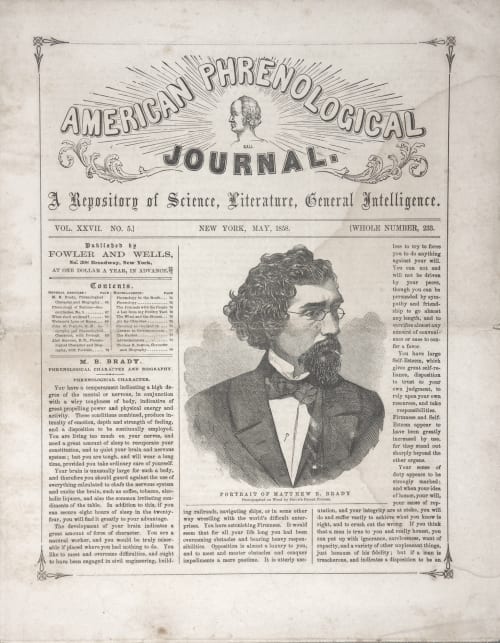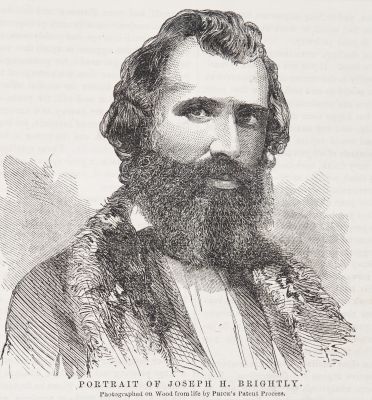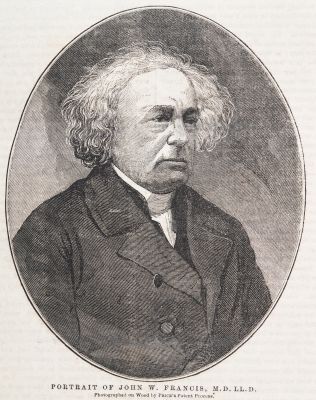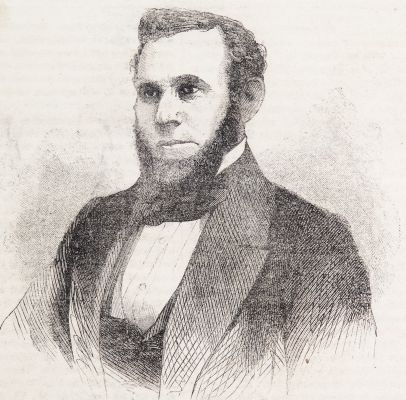
Title
Portrait of Matthew B. BradyArtist
Unknown (American)Publication
American Phrenological JournalDate
1858Process
PhotoxylographAtelier
Brightly, Waters & Co.Image Size
36 x 24 cm
In 1857 a method of preparing a wood block for photosensitizing was patented by Robert Price of Worcester, Massachusetts. The patent specifies a method of coating the wood block with an asphaltum varnish, mixed with ether and lampblack, to seal the pores and to produce a polished surface onto which a photographic emulsion could be coated. The earliest illustrations using this method were printed in articles in the January 1858 issue of the American Phrenological Journal. Below the portraits there is an inscription, ‘Photographed on wood from life by Price’s Patent Process, and Engraved by Brightly, Waters & Co.’ Practically every issue during 1858 had at least one illustration by the process. Scientific American began using the method in May 1859 for woodcuts from photographs.
No single person can be pointed to as the inventor of creating woodblocks cut directly from photographic images produced on the block itself (photoxylograph). However on April 20, 1839 a photogenic drawing was cut and printed in The Mirror of Literature, Amusement, and Instruction. The method was explained “To take a Photographic Copy on Boxwood. Place the smooth side of a block of boxwood in a shallow dish or plate, containing a solution of salt, twenty grains to an once of water. When it has remained in it for about five minutes, take it out and dry it, and then put the same side in another plate containing sixty grains of nitrate of silver, dissolved in an ounce of water. After the elapse of a minute, take it out, and dry it. It will then, on exposure to light, assume a fine brown color. If it be again immersed in each solution, for a few seconds only, it will become so sensitive, as to be affected by a very slight degree of light. To obtain a drawing of a view, or a copy of a picture, &c. proceed with the prepared block, precisely according to the instructions already given for using the photographic paper. In this manner, a drawing upon a block may be most expeditiously obtained, and without the services of a draughtsman. It only needs the wood-engraver.” [1] After this date a number of individuals showed examples: Robert Langton, England 1854; J. De Witt Brinckerhoff in the US, 1855, as well as Robert Price, U.S. — whose process was commercialized in 1857. Even as late as 1861 A. Bolton, England, was credited as the inventor. [2]
Reproduced / Exhibited
Hanson, David A. "The Beginnings of Photographic Reproduction in the Usa." History of Photography. 12.4 (1988): 357-376. figure 17
Rosenblum, Naomi. A World History of Photography. New York: Abbeville Press, 1998 (alt)
Hanson, David A. Checklist of Photomechanical Processes and Printing, 1825-1910. , 2017. p. 105.
References
[1] The Mirror of Literature, Amusement, and Instruction. 18, 1839, no. 949 pg. 31 May
[2] Hanson, David Checklist of photomechanical processes and printing 1825-1910, 2017





